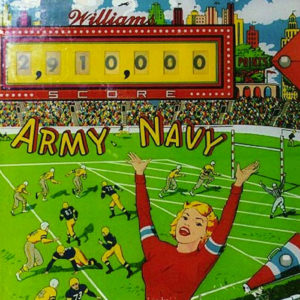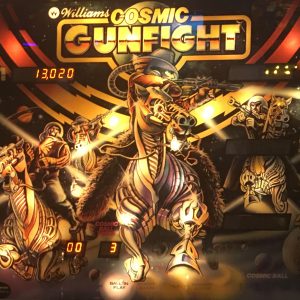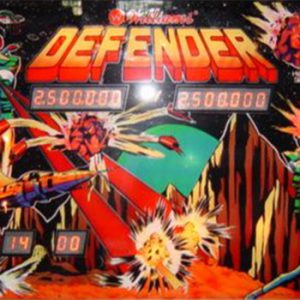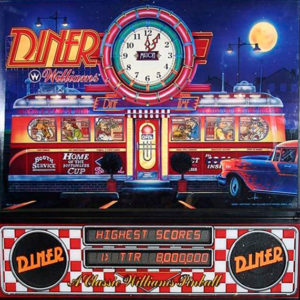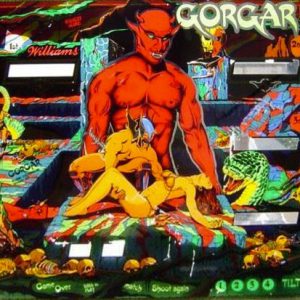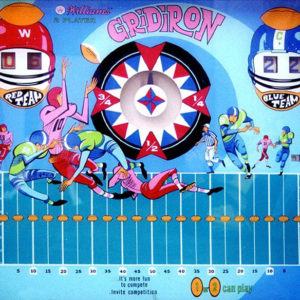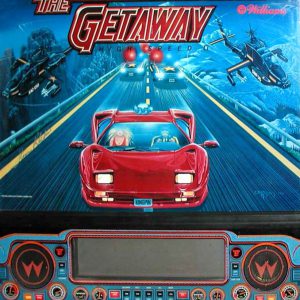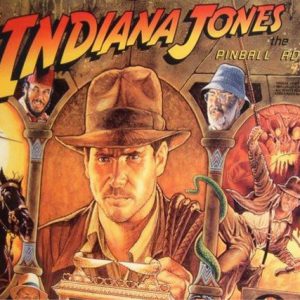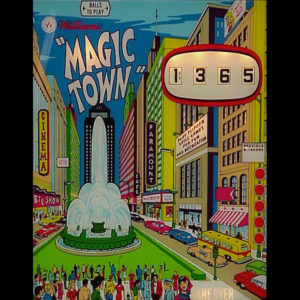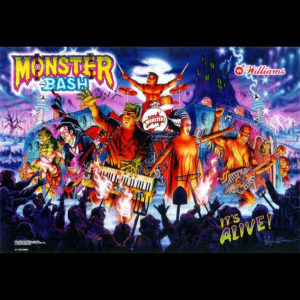-
Defender is an arcade video game developed and released by Williams Electronics in 1980. A shooting game featuring two-dimensional (2D) graphics, the game is set on a fictional planet where the player must defeat waves of invading aliens while protecting astronauts. Development was led by Eugene Jarvis, a pinball programmer at Williams; Defender was Jarvis’ first video game project, and drew inspiration from Space Invaders and Asteroids. Defender is a two-dimensional side-scrolling shooting game set on the surface of an unnamed planet. The player controls a space ship as it navigates the terrain, flying either to the left or right. A joystick controls the ship’s elevation, and five buttons control its horizontal direction and weapons. The object is to destroy alien invaders, while protecting astronauts on the landscape from abduction. Humans that are successfully abducted return as mutants that attack the ship. Defeating the aliens allows the player to progress to the next level. Failing to protect the astronauts, however, causes the planet to explode and the level to become populated with mutants. Surviving the waves of mutants results in the restoration of the planet. Players are allotted three chances (lives) to progress through the game and are able to earn more by reaching certain scoring benchmarks. A life is lost if the ship comes into contact with an enemy or its projectiles. After exhausting all lives, the game ends. Defender is an arcade video game developed and released by Williams Electronics in 1980. A shooting game featuring two-dimensional (2D) graphics, the game is set on a fictional planet where the player must defeat waves of invading aliens while protecting astronauts. Development was led by Eugene Jarvis, a pinball programmer at Williams; Defender was Jarvis’ first video game project and drew inspiration from Space Invaders and Asteroids. Defender was one of the most important titles of the Golden Age of Arcade Games, selling over 55,000 units to become the company’s best selling game and one of the highest-grossing arcade games ever. Praise among critics focused on the game’s audio-visuals and gameplay. It is frequently listed as one of Jarvis’ best contributions to the video game industry as well as one of the most difficult video games. Defender was ported to numerous platforms, inspired the development of other games, and was followed by sequels and many imitations. Defender is a two-dimensional side-scrolling shooting game set on the surface of an unnamed planet. The player controls a space ship as it navigates the terrain, flying either to the left or right. A joystick controls the ship’s elevation, and five buttons control its horizontal direction and weapons. The object is to destroy alien invaders while protecting astronauts on the landscape from abduction. Humans who are successfully abducted return as mutants that attack the ship. Defeating the aliens allows the player to progress to the next level. Failing to protect the astronauts, however, causes the planet to explode and the level to become populated with mutants. Surviving the waves of mutants results in the restoration of the planet. Players are allotted three chances (lives) to progress through the game and are able to earn more by reaching certain scoring benchmarks. A life is lost if the ship comes into contact with an enemy or its projectiles. After exhausting all lives, the game end.This game was a breakthru game. It is the first-ever talking pinball machine. Games of this era had synthesized sound, but this game spoke. The speech wasn’t very clear or very wordy, as memory chips of this era couldn’t hold too much information compared to today’s games, but it was a sensation for Williams. The production run for the game was 14,000 units. It was designed by Barry Oursler with art by Constantino Mitchell. The top three rollover lanes would, if completed give up two, then three times bonus. The snake pit in the upper-left playfield has a magnet under it, which captures the ball for bonuses and Gorgar’s chance to use his seven-word vocabulary. Spelling out the word “Gorgar” makes the monster say his name and increases bonus values. This game also incorporates the background noise made famous in the Williams game Flash (in the museum). This time the background sound is of a heartbeat. It gets faster and faster as you advance.12,716 of these Mark Ritchie-designed games were produced in wide-body format. This machine has a lot of the action associated with the first three Indiana Jones adventures produced by Lucas and Spielberg and is rated in the top 10 machines of the ‘90s. Four multiball modes grace this machine as well as a ton of video clips designed by Brian Eddy. Twelve different scenes from the movies are represented. Completing these scenes awards a six-ball multiball sequence. A three-ball multiball sequence may be had by hitting the center drop targets and popping a ball into the drop hole behind them. The path of adventure is lit by hitting the letters in the word “adventure.” Doing so opens the path up the right ramp to the tilt-a-matic playfield in the upper left. The object here is to use the flipper buttons to guide the ball to glory.This electromechanical two-player game was designed by Steve Kordek. The game reminds one of an older game, as an animated golfer is on board that you aim to hopefully sink a ball in the appropriate hole. The nine scattered holes are tough to sink, especially the back ones. The lower your score in strokes, the better with this game (no handicap is given). Free games may be awarded set by the operator for low-stroke counts after completing so many holes. A neat and rare game.
HOURS SUBJECT TO CHANGE! | Sun–Thurs: Noon–12am • Fri-Sat: Noon-2am | 19 NE 3rd Ave., Delray Beach, FL 33483 | (561) 266-3294 | Email Club



